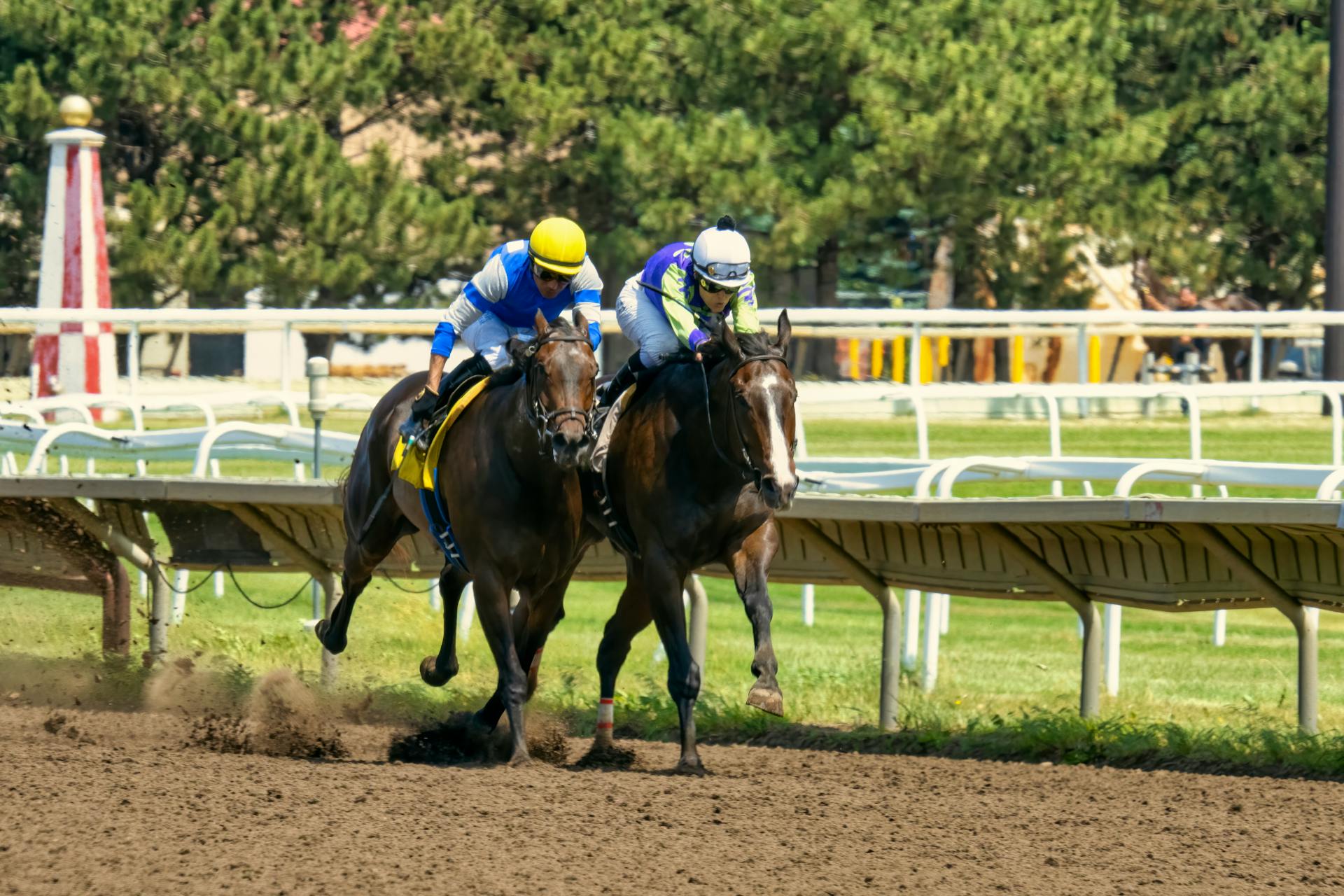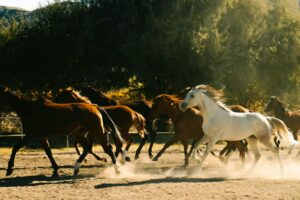Introduction to the Jockey’s World
The profession of a jockey is often romanticized, presenting an image filled with glamour, high-stakes races, and breathtaking equestrian feats. However, this vibrant portrayal contrasts sharply with the realities of the jockey’s life, which encompasses rigorous training, physical endurance, and unwavering commitment. As individuals responsible for riding and guiding thoroughbred horses during races, jockeys play a critical role in the equestrian sports industry.
Training is an essential component in the life of a jockey. This consists of not only mastering riding skills but also understanding the unique behaviors and needs of the horses they handle. Most jockeys begin their careers young, often starting as apprentice riders. They must develop a deep bond with their equine partners, which can take years of practice and experience. The physical demands of the profession are significant; jockeys must maintain their weight within strict limits while simultaneously building the strength and agility required to control powerful racehorses. Their workouts may include running, weight training, and even yoga to enhance flexibility.
Emotional resilience is another crucial trait for jockeys. The racing world is filled with uncertainties, including the risk of injury, financial fluctuations, and unexpected outcomes. The pressure to perform not only for themselves but also for owners, trainers, and fans adds another layer of intensity to their daily lives. Jockeys must manage these challenges while also cultivating a focused and competitive mindset.
In essence, the life of a jockey is a delicate balance between the thrill of competition and the rigors of preparation. It is a profession that requires a unique blend of physical prowess, emotional fortitude, and an intense passion for the sport. Understanding the full scope of their experiences allows us to appreciate both the achievements and the sacrifices made by these dedicated athletes.
The Physical Demands of Being a Jockey
The life of a jockey is characterized by its stringent physical demands, necessitating not only exceptional riding skills but also rigorous physical training. Maintaining an optimal weight is paramount for jockeys, as their success in races often hinges on the ability to meet strict weight categories. This requirement compels jockeys to undertake stringent diets and exercise routines to shed pounds effectively while ensuring they remain strong and agile. The challenge of managing weight can lead to significant stress, as jockeys must strike a delicate balance between losing weight and maintaining the necessary energy levels for training and racing.
Endurance is another critical aspect of a jockey’s physical conditioning. Race days can last for extended periods, covering multiple races that may require intense focus and physical exertion. To prepare for these demanding schedules, jockeys engage in a variety of cardiovascular exercises designed to enhance stamina. Practices such as running, cycling, and swimming are popular among jockeys, enabling them to build the necessary endurance that allows for quick recoveries between races and sustained performance throughout the demanding racecourse.
Strength training plays a vital role in a jockey’s regimen as well. Despite their relatively lightweight status, jockeys must possess considerable core and leg strength to maintain control over their mounts. Implementing exercises such as squats, lunges, and resistance training helps build the strength needed to manage the physical challenges posed by high-speed races. Additionally, injuries are a significant concern for jockeys, as the sport inherently involves risks that can lead to falls and accidents. Consequently, a comprehensive fitness program not only enhances performance but also minimizes injury risks, allowing jockeys to compete at their best. Overall, the combination of weight management, endurance training, and strength conditioning underscores the formidable physical demands that jockeys must navigate in their pursuit of success on the racetrack.
Daily Training Routines: What Does a Jockey’s Day Look Like?
The daily life of a jockey is characterized by rigorous training routines that emphasize both physical fitness and mental acuity. A typical day begins early in the morning, often before dawn, as jockeys prioritize their workouts to maintain peak condition. Morning workouts usually commence at the racetrack, where jockeys ride several horses, allowing them to develop their skills and stay sharp. These sessions are not only about maintaining physical strength; they also provide vital opportunities to assess the horses’ performances, their temperament, and their readiness for upcoming races.
In addition to riding, jockeys are expected to complete various homework assignments concerning the horses they work with. This entails studying each horse’s race history, understanding their behavior, and determining their strengths and weaknesses. This analytical approach is crucial for developing effective riding strategies that can maximize the horse’s performance during races. By dedicating time to these assignments, jockeys enhance their understanding of the animals they ride, enabling them to make informed decisions on race day.
Time spent in the stables is another critical aspect of a jockey’s routine. Interacting with the horses directly allows jockeys to build a rapport, fostering trust and enhancing their riding ability. In the stable, jockeys work with trainers and grooms to ensure that each horse receives the care and attention it requires. This comprehensive involvement in the horse’s daily life ensures that jockeys are not only skilled riders but also knowledgeable caretakers. Furthermore, mental preparation plays a significant role; visualizing race strategies and anticipating competitors’ moves forms an essential part of a jockey’s commitment to excellence.
This multifaceted routine highlights the dedication and resilience necessary for a successful jockey career, where everyday training sessions ultimately culminate in the high-stakes excitement of race days.
Getting to Know the Horses: Building a Connection
The relationship between a jockey and their horse is a profound one, often described as a partnership built on trust, respect, and understanding. Each horse possesses a unique personality, requiring jockeys to invest time in getting to know their steeds. Recognizing a horse’s individual strengths and weaknesses can significantly impact its performance on the racetrack. This understanding enables jockeys to tailor their riding styles and strategies, fostering a synergy that is essential for success.
Famous jockeys often recount their experiences of developing this bond with their horses. For instance, renowned jockey Jerry Bailey has spoken about the importance of observing his mounts and gauging their mood. Bailey emphasized how crucial it is to understand whether a horse is feeling energetic, anxious, or calm, as these emotions can influence racing performance. Jockeys often spend countless hours with their horses, which includes grooming, feeding, and training, helping to cultivate a bond that goes beyond riding. This connection is vital, as a horse that trusts its jockey is more likely to respond positively during the inherent stresses of a race.




